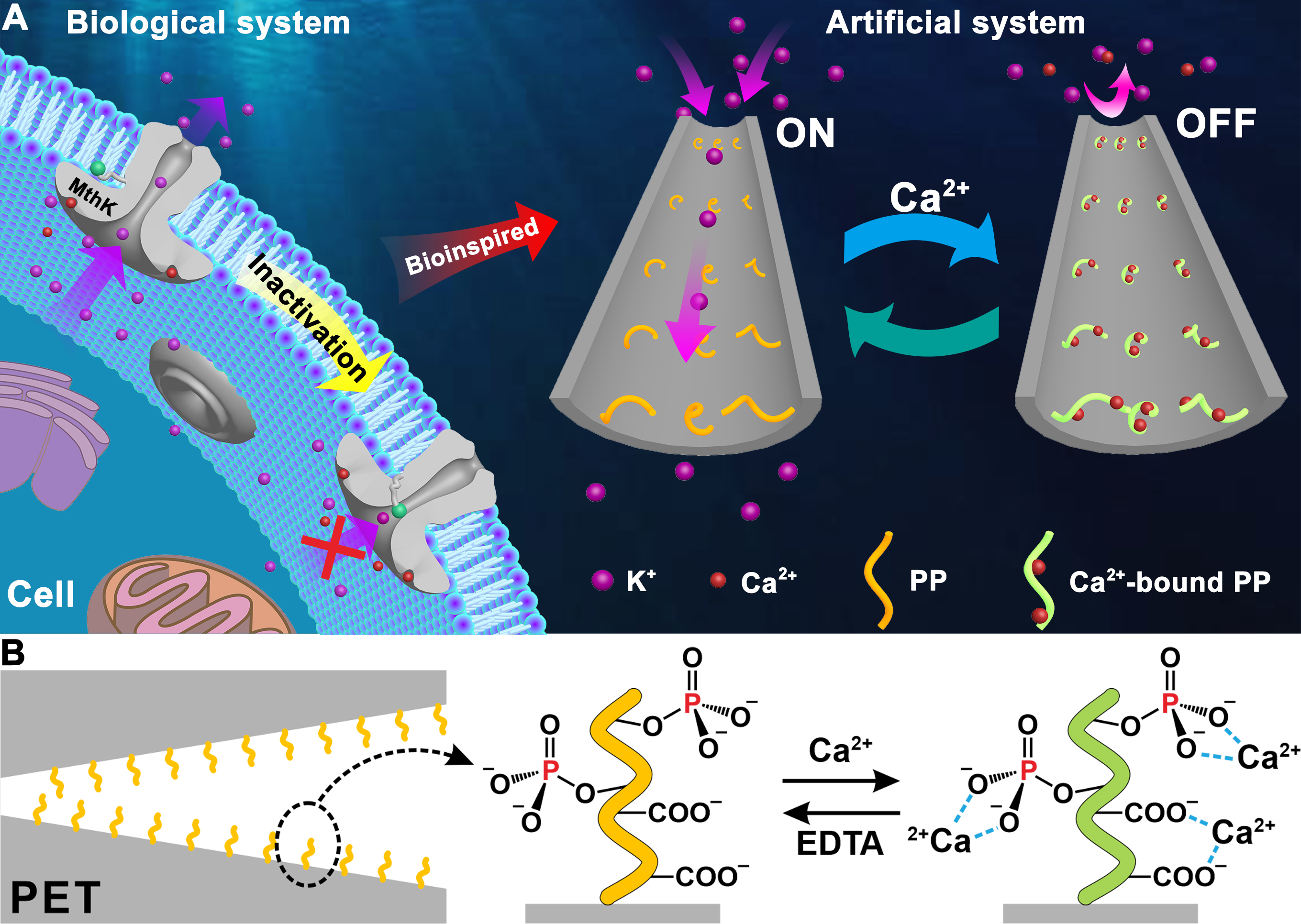Biomimetic calcium-inactivated ion/molecular channel
Time:2023-04-27 11:33 Author:Minmin Li
Minmin Li, Yucheng Cao, Xin Zhang, Dongdong Wang, Shengxu Qian, Guodong Li, Fusheng Zhang, Yuting Xiong, and Guangyan Qing*
Chem. Commun. 2021, 57, 7914-7917.

A phosphopeptide-modified nanochannel was prepared based on a conical polymeric nanopore. It shows a reversible Ca2+-induced inactivation effect toward the ion flow and molecular transport, resulting from Ca2+ binding-caused surface charge neutralization and hydrophilicity reduction, and Ca2+ removal by the competitive binding. Here, we describe a Ca2+-inactivated ion channel based on a single conical nanochannel in polyethylene terephthalate (PET) film modified with a phosphorylated peptide (PP). The grafted PP (DpSpSEEKC) can bind multiple Ca2+ in neutral condition (Scheme 1B), resulting in the substantial decline of ion flow through PP modified PET nanochannel (abbreviated as PP nanochannel), and thus showing a Ca2+ induced inactivation effect. The further treatment of ethylenediaminetetraacetic acid (EDTA) allows the inactivated nanochannel to recover activity. Also, the presented biomimetic Ca2+ inactivated channel can regulate negatively charged molecule transport.